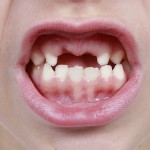
The 2013 Cochrane review of fluoride varnish for caries prevention in children and adolescents by Marino et al (Dental Elf – 12th July 2013) found moderate quality evidence of a substantial caries inhibiting effects in both permanent and primary teeth. The review included 10 trials in the primary dentition suggesting a 37% (95% CI 24% to 51%) reduction in decayed missing and filled teeth. However, a number of recent trials have not demonstrated similar levels of protection.
The aim of this review was to assess the effectiveness of fluoride varnish in reducing the risk of developing new dentine caries lesions and caries-related hospitalizations in pre- schoolers and to assess whether its effectiveness is influenced by baseline caries levels.
Methods
Searches were conducted in the Cochrane Central, Medline/PubMed, Web of Science, Embase, Scopus, LILACS and BBO. Meeting abstracts from International Association for Dental Research (2001–2018) and the European Organisation for Caries Research (1998–2018), Open Grey, EThOS, the New York Academy of Medicine (GreyLit Report), and Banco de Teses CAPESwere also searched as were Current Controlled Trials, ClinicalTrials.gov, EU Clinical Trials Register, Australia New Zealand Clinical Trials Registry, and Registro Brasileiro de Ensaios Clínicos. Randomised controlled trials (RCTs) or quasi-RCTs were considered.
Two reviewers independently extracted data from the selected studies and the Cochrane tool was used to assess risk of bias. Outcomes considered were proportion of children who developed new dentine caries lesions and caries-related hospitalisations (individual level), and the number of primary teeth and tooth surfaces that developed dentine caries lesions. Meta-analyses were conducted using a random-effects model.
Results
- 20 studies were included, 19 in the qualitative analysis and 17 in at least one meta-analysis.
- The studies were conducted in 13 difference countries, Australia, Brazil, Canada, Chile, China, Germany, Greece, Iran, Ireland, Poland, Scotland, Sweden, and the USA.
- Only 1 study was considered to be at low risk of bias, 4 at unclear risk and 14 at high risk of bias in at least one domain.
- No studies reported on caries-related hospitalisations.
| No of studies | Relative risk (95%CI) | Prediction Interval | |
| Varnish v placebo | 6 | 0.86 (0.72-1.03) | 0.57 – 1.32 |
| Varnish v usual care | 2 | 0.84 (0.72-0.98) | NA |
| Varnish v no intervention | 6 | 0.85 (0.73-0.98) | 0.53 – 1.35 |
| Varnish +Oral Health Advice (OHA) + Community intervention v no intervention | 1 | 1.00 (0.94-1.06) | NA |
| Varnish +OHA +1450 toothpaste v OHA | 1 | 0.87 (0.75-1.02) | NA |
| Overall | 16 | 0.88 (0.81-0.95) | 0.68 – 1.14 |
- At the individual level the pooled relative risk was 0.88 (95%CI; 0.81, 0.95). This equates to a number needed to treat of 17 in a population of preschool children with 50% caries incidence.
- At the tooth level, the pooled weighted mean difference was -0.30 (95%CI; -0.69, 0.09) and at the surface level -0.77 (95%CI; -1.23, -0.31).
Conclusions
The authors concluded: –
Fluoride varnish showed a modest and uncertain anticaries effect in pre-schoolers. Cost-effectiveness analyses are needed to assess whether fluoride varnish should be adopted or abandoned by dental services.
Comments
The authors have undertaken a detailed searched of a wide range of databases for this review identifying 10 studies there were not published at the time of the last Cochrane review of fluoride varnish in 2013. Seven of the 10 studies involving primary teeth included by the Cochrane reviewers are included in this new review as are two other studies that were excluded by Cochrane. The main results for the Cochrane review are presented as a preventive fraction while this reviews authors argue against using it as it is a relative measure. A comparison of the risk ratios for fluoride varnish versus placebo is similar for the two reviews, 0.86 (0.72-1.03) for this review compared to 0.81(0.62-1.06) for the Cochrane review.
The findings suggest that recent trials suggest that the effectiveness of fluoride varnish may be lower that than previously suggested and that this may be related to lower risk of bias in the newer studies and increased availability of fluoride. That said only two of the included studies were considered to have a low risk of bias. Additional studies in the primary dentition that include high quality cost effectiveness work would be helpful given that widespread use of fluoride varnish in large-scale preventive programmes.
Links
Primary Paper
Sousa FSO, Santos APP, Nadanovsky P, Hujoel P, Cunha-Cruz J, Oliveira BH. Fluoride Varnish and Dental Caries in Preschoolers: A Systematic Review and Meta-Analysis. Caries Res. 2019 Jun 20:1-12. doi: 10.1159/000499639. [Epub ahead of print] PubMed PMID: 31220835.
Other references
Dental Elf – 12th July 2013
Updated review confirms substantial reductions in caries from fluoride varnish applications
Dental Elf – 6th Feb 2014
